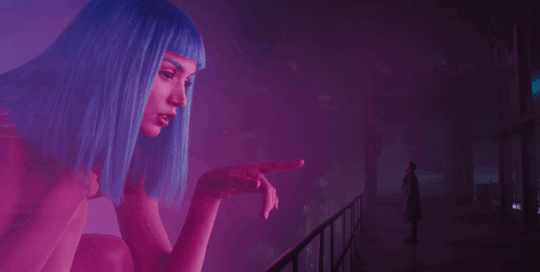#ryan goslin aesthetic
Text









𝐢𝐜𝐨𝐧𝐬
𝐛𝐚𝐫𝐛𝐢𝐞
#barbie#barbie icon#barbie icons#barbie aesthetic#ken#ken icon#ken icons#ken aesthetic#allan#allan icon#allan icons#allan aesthetic#margot robbie#margot robbie icon#margot robbie icons#margot robbie aesthetic#ryan gosling#ryan gosling icon#ryan gosling icons#ryan goslin aesthetic
124 notes
·
View notes
Photo

#mine#blade runner#blade runner 2049#deckard#harrison ford#aesthetic#neon#aestethic#ryan goslin#colorful#joe#K#Blade Runner K
287 notes
·
View notes
Text
Comprehensive Bibliography Of BTS
This is just a list of material referenced, alluded to or related to BTS’s concepts, music, photobooks, albums and music videos. This is not a fan theory, or an attempt at one! Anyways here’s the precursor to my scholarly paper, lolllll (I’m not joking though). I’ll update it as we goooooo....
Also, I know almost nothing about the School trilogy, but it’s my understanding that there’s not a lot of outside source material. I could be wrong though. Does it reference mangas and stuff??? send me a msg if you know.
(just a reminder that while BTS is remarkably involved in the creative direction of the group, the formation of a kpop groups’ era/concept is made by a large team of people, and therefore the members probably haven’t even considered or explored upwards of half the material on this list).
(asterisks mean that these works are not directly referenced by BTS in their interviews, lyrics or imagery, etc, but which are still tangentially related)
BTS book club list is as follows:
Shim Cheong - a Korean Panseori tale (Dark and Wild)
Demian by Hermann Hesse (Wings)
Seven Sermons to the Dead by Carl Jung (Wings)*
The Collected Works of CG Jung by Carl Jung (Wings)*
Thus Spoke Zarathustra by F. Nietzsche (Wings)
Beyond Good and Evil by F. Nietzsche (Wings)*
The Ones Who Walk Away From Omelas by Ursula K Le Guin (YNWA)
The Moral Philosopher and The Moral Life by William James (YNWA)*
The Brothers Karamazov by Fyodor Dostoyevsky (YNWA)*
Le Transperceneige by Jacques Lob (YNWA)
Then here’s the film club list:
She and Her Cat (dir. Makoto Shinkai)(short film) (HYYH pt.2)(this is according to Bang PD)
Lost River (dir. Ryan Goslin) (Young Forever)
Big Fish (dir. Tim Burton) (reason here) (YNWA)
The Helpers/No Vacancy (dir. Chris Stokes) (YNWA)* (tbh this seems fairly coincidental to me, which is why it gets an asterisk.
Snowpiercer (dir. Bong Joon Ho) (YNWA)
BTS music playlist:
Wild For The Night by A$AP rocky (Dark & Wild)
Friday Night Lights by J.Cole (Dark & Wild)
2001 by Dr. Dre (Dark & Wild)
花樣的年華 - Zhou Xuan (HYYH pt.1/pt.2)*
Nevermind - Nirvana (HYYH pt.2)
Wasted Youth (HYYH pt.2)
Wish You Were Here - Pink Floyd (Young Forever)
Passacaglia in D minor (BuxWV 161) - Buxtehude (Wings)
You’ll Never Walk Alone - Louis Armstrong (YNWA)* (100% this isn’t a purposeful reference, but it’s a good song, y’all should listen to it)
BTS’s art history class bibliography:
Julius Caesar on Gold by Basquiat (Young Forever)
Tricycle by Basquiat and Warhol (Young Forever)*
Orange Sports Figure by Basquiat (Young Forever)
The Fall of the Rebel Angels - Bruegel the Elder (Wings)
The Landscape with the Fall of Icarus - Bruegel the Elder (Wings)
The Lament for Icarus - Draper (Wings)
La Pieta by Michelangelo (Wings)
Personnes by Christian Boltanski (YNWA)*
Further Analysis (and more fan-theory type stuff) in chronological order, under this read more~~
I’m not sure there’s meant to be a single “correct” reading of the group’s narrative or story. Even in Wings, which drew its story fully from Demian, the ultimate narrative of the BST M/V is more vague. While there might be a complete and overarching narrative that Bighit is trying to create with Bangtan’s concepts/mvs, I think it’s more likely that there are a lot of narrative threads running through the story, and some are maintained longterm, some are relevant only to as specific chapter, while others are merely aesthetic/cosmetic. I have a feeling that even longterm narrative ideas are sometimes allowed to fade away for the benefit of moving the story forward at the pace they want.
Dark and Wild
Shim Cheong is just a throwaway simile on hip hop lover. I’m pretty sure it’s a reference to the idea that seeing Shim Cheong again allowed her blind father to gain the ability to see.
References like the one to Wild for the Night on hiphop lover (they also tweeted about the song back in 2013) don’t really do much except show that they genuinely like/listen to American rap and also it explains at least 66% of the dumb mistakes Rap Monster has made, probably, my poor problematic child. Hip Hop lover references a ton of artists, but I just included the ones that are mentioned by more than just name.
The Most Beautiful Moment In Life (pt.1/pt.2)
Zhou Xuan is the first media reference point for HYYH (花樣年華)(It’s what the Chinese title for In the Mood For Love is based on). The lyrics refer to forgotten dreams.
Wong Kar Wai’s In the Mood For Love (花樣年華) is not listed, as RM mentioned in the interview that this was not associated with their album.
Notes of a Desolate Man by Tianwen Shu is excerpted in a Taiwanese literary anthology by the name of 花樣年華, and I though think it relates thematically, it’s merely my own personal association~ There’s no indication that BTS or Bighit even knows it exists. Tianwen Shu is greatly influenced by Lu Xun, who wrote the anti-confucian societal norms novel, A Madman’s Diary.
Nirvana t-shirts are a go to for BTS’s stylists, probably MOSTLY because they fit their preferred grunge image, but the word “Nirvana” fits well into the ideas of tragedy/death, utopia/dystopia and idealism that BTS plays with, while Nirvana the band is obviously a good reference point for realistic portrayals of youth culture and music which speaks to young people, particularly the crazy popular Nevermind (ahem Yoongi’s intro song) with Smells Like Teen Spirit and Come As You Are. (further fan theory here)
It’s crazy to me that Bang PD found inspiration in a five minute anime about a cat, but read the wiki summary and you’ll believe him: “When it's over She cries and becomes depressed. Chobi does not understand what the conversation was about or what happened but concludes that it was not her fault. He stands by her and comforts her. Time goes on and it becomes winter. She continues going to work and moves on with her life. In the end Chobi and She are happy with their life together and say in unison, 'This world, I think we like it.’”
Fire (Young Forever)
Pink Floyd’s “Wish You Were Here” thematically deals with youth/nostalgia (Shine On You Crazy Diamond: "Remember when you were young, you shone like the sun"). It includes critiques of the music industry and the cliches that the group had to deal with. The narrative of Wish You Were Here is very much in line with Bangtan’s overall group narrative.
Lost River (a phrase you can see on a wall in the Fire M/V) is a film about a poor community, and specifically a mother and her two sons, going through crisis. The film includes a scene of a party in an abandoned high school and ends with both a house and a car on fire. The film has an open ending which leaves room for an improved future, but the film is primarily about the limited possibilities and opportunities
As far as I can tell, the “Basquiat” paintings in the fire M/V are just imitations rather than references to specific paintings. They’re probably being used just as an aesthetic choice - Basquiat’s art was a synthesis of street art, outsider art, social commentary and post-expressionism. However, his life is also relevant narratively: he died young at 27 and he first gained fame as a graffiti artist.
I’m not putting it above because the film is super inappropriate, but the phrase “enter the void” is used in the Run M/V, and could refer to the Gaspar Noe film of the same name. The title of that film is, in fact, a reference to The Tibetan Book of the Dead. However, the term “void” (and the images of the void in the M/V) could just be a reference to five elements in Japanese Buddhism (including fire), particularly the Book of Five Rings. But this is me getting uber fan theory, lol.
Another graffitied phrase in the Run M/V is “wasted youth.” This could be one of three things; a reference to the hardcore punk band, Wasted Youth, an allusion to Fast Times at Ridgemont High which also includes a scene featuring “wasted youth” graffitied on a wall, or the phrase isn’t an allusion, but merely a description of the M/V concept.
Wings
The relationship to Demian needs its own post, so I won’t even go into it itself, but the tangential references it spawned are as follows:
The paintings in the Wings video are all in reference to Demian but are also all biblical/mythological in nature, based on the book of revelations, Ovid’s The Art of Love, and the crucifixion. The religious references, however, are dulled down -- Jesus is not fully sculpted, leaving him to be a vaguely carved form and allowing the image to stand more as an allegory for the relationship between mother and “son” in Demian. (some further fan analysis of the art here)(and more specifically on the use of icarus).
The Passacaglia is also a piece which is referred to in Demian in the part of the book where the narrator begins to find spiritual fulfillment through music and art, something BTS talks about a lot.
Demian draws lot from Carl Jung, particularly his ideas about symbolism, archetypes and psychoanalysis. The book specifically alludes to Jung’s Seven Sermons, and the idea that Abraxas is the ultimate being, uniting both god and the devil. Thematically, through Demian, this deals with themes of forming ones’ own moral code, and ideas of will and strength of character, with good and evil being both at odds but also simultaneously part of everything. This theory/concept in largely influenced by Nietzsche, most especially his Beyond Good and Evil. Together these are all philosophies which pull away from the ideas of societal norms or strict social structures and place a premium on personal/creative expression.
Thus Spoke Zarathustra (quoted in the Wings photobook and BST M/V) also furthers this idea that good and evil are “a wheel.” It posits that Truth (not morality) is the highest virtue and that idealists flee from reality (SEE: Icarus). The novel also introduces the idea of the overman, which is a gross idea and super problematic, but I can it being applied thematically to BTS as the idea of a ‘fully realized self.’ Zarathustra is a figure Nietzsche borrowed from Zoroastrianism. (this writer has more ideas on some connections to Nietzsche).
You Never Walk Alone
“Omelas” and the theme of walking obviously references the Le Guin story, which is inspired by the William James essay, which in turn borrows ideas from Dostoyevsky.
Namjoon’s reference Snowpiercer plays into the video’s visual narrative (an inescapable cycle, the train, the cyclical nature of seasons, laundry is a cycle [2mjjk theory speaks to all these, lol]) as the story is about a train which circles the globe, in a world stuck in perpetual winter. Unlike the more environmentally-focused graphic novel, Snowpiercer the (korean-directed) film is intensely focused on class inequality, a theme which runs through BTS’s albums (see particularly Baepsae, but it’s a concern relevant to their School series, since most pressures put on students are related to social class) and which is of incredible concern to Korean people, and therefore is a common concern of a lot of Korean art. Bong Joon Ho’s other film works are all very heavy on social commentary (the host deals with the american military and politics/activism, sea fog also talks about social inequality... etc...), so referencing one of his films is a pretty clear statement that you are making a critical commentary on something. Like the Le Guin short story The Ones Who Walk Away from Omelas, the film is about a dystopia in which the upper class/middle class/general public is reliant on the continual suffering of another (in this class the lower class or last train) to survive. Trains provide a very easy metaphor for class given their class divisions into separate carriages. This was also applied in another Korean blockbuster from the last year, Train to Busan (dir Yeon Sang-ho), which included some pretty transparent commentary on the negative effect that an apathetic, self-serving, lazy (male) middle-aged, middle-class could have on the survival of families and younger generations.
Most fan theories agree that the clothes in the M/V are a reference to the sewol ferry disaster. Here is the fan explanation for how that connects to Boltanski’s Personnes.
#bts#bangtan#you never walk alone#who i am now#my thoughts#not that you care#bts in cultural context
6 notes
·
View notes








